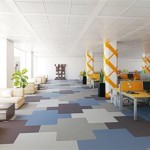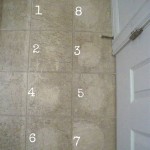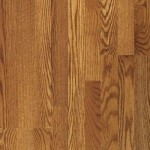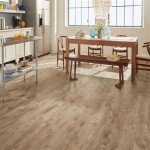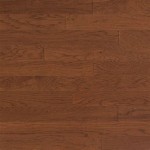Birch Wood Flooring Durability: A Comprehensive Examination
Birch wood flooring offers a compelling combination of aesthetic appeal and practical functionality for residential and commercial spaces. However, understanding its durability is crucial before making a flooring investment. Durability encompasses a variety of factors, including resistance to scratches, dents, water damage, and overall wear and tear. This article provides a detailed examination of birch wood flooring's durability, exploring its strengths, weaknesses, and factors that contribute to its longevity.
Birch, a hardwood species, is readily available and generally more affordable than some other hardwood options like oak or maple. Its light color and smooth grain pattern make it a versatile choice that complements various interior design styles. From a purely visual perspective, birch presents a bright and airy feel to a room due to its pale hue, ranging from creamy white to light yellow. This provides a neutral canvas that allows for easy incorporation with bolder furniture pieces or wall colors.
The most common types of birch used in flooring are yellow birch (also known as golden birch) and white birch (also known as paper birch). Yellow birch is generally considered harder and more durable than white birch, making it a preferable choice for high-traffic areas. The Janka hardness scale, a measure of a wood's resistance to denting and wear, provides a quantifiable metric for comparing different wood species. Yellow birch typically ranks around 1260 on the Janka scale, while white birch scores lower, around 910. This difference in hardness directly impacts the flooring's ability to withstand daily use and potential damage.
Understanding the Janka Hardness Scale and its Relevance
The Janka hardness scale is a standardized system used to measure the relative hardness of different wood species. The test involves measuring the force required to embed a steel ball with a diameter of 0.444 inches into the wood to half its diameter. The resulting force, measured in pounds-force (lbf), is the Janka hardness rating. A higher Janka rating indicates a harder wood, implying greater resistance to denting, scratching, and general wear. It's important to note that the Janka hardness scale is only one factor to consider when evaluating the durability of wood flooring. Other factors, such as the type of finish applied, the quality of installation, and the level of maintenance, also play significant roles.
For birch wood flooring, the Janka hardness rating provides a useful benchmark for understanding its potential performance. While yellow birch's rating of 1260 is respectable, it's not as high as some other popular hardwood flooring options like red oak (1290) or hard maple (1450). This means that birch flooring, particularly white birch, may be more susceptible to dents and scratches compared to these harder species. Homeowners with active families, pets, or high foot traffic should carefully consider this factor when choosing birch wood flooring.
However, the Janka hardness scale should not be the sole deciding factor. The type of finish applied to the birch flooring can significantly influence its overall durability. A high-quality, durable finish can provide an additional layer of protection against scratches, stains, and moisture. Similarly, proper installation techniques are essential for ensuring the long-term performance of birch flooring. A poorly installed floor is more prone to warping, cupping, and other forms of damage, regardless of the wood's inherent hardness.
The Impact of Finish on Birch Wood Flooring Durability
The finish applied to birch wood flooring acts as a protective barrier, shielding the wood from external elements that can cause damage. Different types of finishes offer varying levels of protection and aesthetic properties. Common types of finishes for wood flooring include polyurethane, oil-based finishes, and water-based finishes. Each type has its own advantages and disadvantages in terms of durability, appearance, and ease of maintenance.
Polyurethane finishes are known for their exceptional durability and resistance to scratches and abrasion. They form a hard, protective layer on the surface of the wood, making them a popular choice for high-traffic areas. Polyurethane finishes are available in various sheens, from matte to glossy, allowing homeowners to customize the appearance of their flooring. However, polyurethane finishes can be more difficult to repair than other types of finishes, and they may yellow over time.
Oil-based finishes penetrate the wood fibers, providing a natural look and feel. They enhance the wood's grain and color, creating a warm and inviting atmosphere. Oil-based finishes are also relatively easy to repair, as individual scratches can be spot-treated without refinishing the entire floor. However, oil-based finishes are generally less durable than polyurethane finishes and may require more frequent maintenance.
Water-based finishes offer a balance of durability and environmental friendliness. They are low in volatile organic compounds (VOCs), making them a healthier option for indoor air quality. Water-based finishes are also generally more resistant to yellowing than polyurethane finishes. However, water-based finishes may not be as durable as polyurethane finishes and may require more frequent reapplication.
Regardless of the type of finish chosen, it's crucial to select a high-quality product and apply it according to the manufacturer's instructions. Proper preparation of the wood surface is also essential for ensuring optimal adhesion and performance of the finish. Multiple coats of finish are typically recommended to provide adequate protection and durability.
Environmental Factors and Preventative Measures
Beyond the inherent properties of birch wood and the type of finish applied, environmental factors and preventative measures significantly influence the long-term durability of birch flooring. These factors include humidity levels, sunlight exposure, and the presence of moisture. Implementing appropriate preventative measures can help mitigate the risks associated with these factors and extend the lifespan of the flooring.
Maintaining stable humidity levels is crucial for preventing warping, cupping, and gapping in birch wood flooring. Wood is a hygroscopic material, meaning it expands and contracts in response to changes in humidity. Excessive humidity can cause the wood to swell, while low humidity can cause it to shrink. Ideally, the relative humidity in the home should be maintained between 30% and 50% year-round. Using a humidifier or dehumidifier can help regulate humidity levels and protect the flooring from damage.
Prolonged exposure to direct sunlight can cause fading and discoloration of birch wood flooring. UV radiation from the sun can break down the lignin in the wood, leading to a change in its color. Using curtains, blinds, or window film can help reduce sunlight exposure and protect the flooring from fading. Rotating rugs and furniture periodically can also help prevent uneven fading.
Moisture is a major threat to wood flooring, as it can cause warping, staining, and mold growth. It's essential to promptly address any spills or leaks on the flooring to prevent moisture damage. Using doormats at entryways can help reduce the amount of dirt and moisture tracked into the home. Cleaning birch wood flooring with a damp mop rather than a wet mop can also help prevent water damage. Avoid using harsh chemicals or abrasive cleaners, as these can damage the finish and the wood itself.
Regular maintenance is essential for preserving the beauty and extending the lifespan of birch wood flooring. This includes sweeping or vacuuming regularly to remove dirt and debris, as well as occasional deep cleaning to remove stubborn stains and grime. Using a wood floor cleaner specifically designed for the type of finish on the flooring can help prevent damage and maintain its luster.
In summary, the durability of birch wood flooring is influenced by a combination of factors, including the type of birch (yellow or white), the Janka hardness rating, the type of finish applied, environmental conditions, and preventative maintenance. While birch may not be as hard as some other hardwood flooring options, it can still provide a durable and beautiful flooring solution with proper care and maintenance.

Birch Vs Oak Wood Floors Which Is The Better Option Carlisle Wide Plank

Everything You Need To Know About Birch Wood Flooring

Birch Hardwood Floors Canadian Home Style

Wide Plank Birch Flooring Hardwood Vermont

Ultimate Guide To Birch Hardwood Flooring Know The Uses Advantages

Ultimate Guide To Birch Hardwood Flooring Know The Uses Advantages

Ultimate Guide To Birch Hardwood Flooring Know The Uses Advantages

The 10 Best Hardwood Floors For Your Home Floorings

Yellow Birch Prefinished Hardwood Flooring The Fantastic Floor

Wide Plank Birch Flooring Hardwood Vermont
Related Posts

